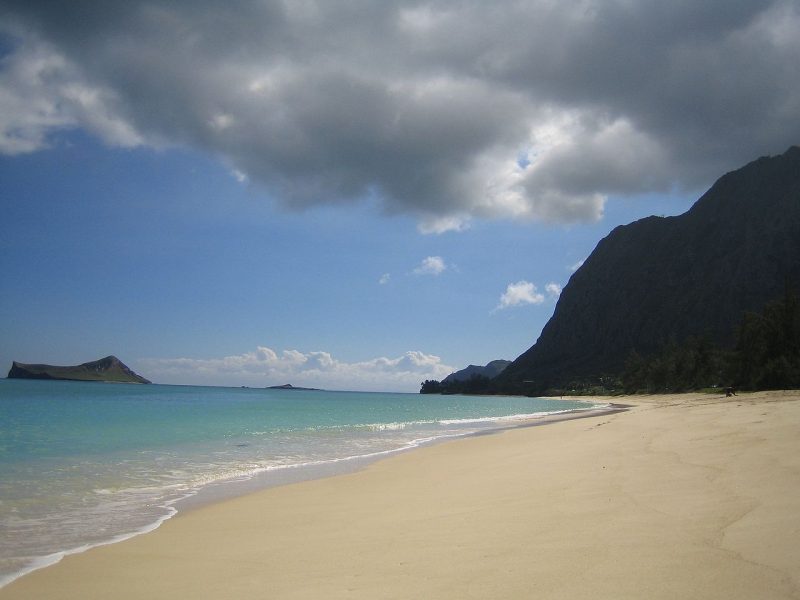About 400 years ago, the ancestors of the indigenous Hawaiian people carved images into the sandstone bedrock of the beach along Oahu’s Waianae Coast, which lies on the western side of Hawaii. The sands of the beach eventually covered these magnificent carvings, and they lay protected under their sandy blanket until wind and waves uncovered them last year.
In July 2016, two tourists from Texas, Lonnie Watson and Mark Louviere, were enjoying a sunset stroll along the beach when a trick of light caught Lonnie Watson’s eye: “For some reason, there was a beam of light … just a beam. It landed right on one of them and for some reason, I just turned my head. I said, ‘Look!’ It was just a stroke of luck.” Turns out they had found a previously unrecorded petroglyph site. The word petroglyph means “stone carving” and comes from the Greek language. The word petros means stone and the word glyphe means carving.
They reported their find to the authorities, and now the Department of Land and Natural Resources (DLNR) and the U.S. Army (which is responsible for all archaeological finds within the Hawaiian Islands) have undertaken a project to record the images and make arrangements for their protection. Though it is likely that these carvings have been uncovered before, this is the first time that they have been brought to the attention of the authorities.
Tides Expose Newly Discovered Petroglyphs on Hawaii Beach https://t.co/wXPMNp5KWK pic.twitter.com/RLzMCmbTyt
— Ticia Verveer (@ticiaverveer) August 15, 2016
Army archaeologist Alton Exzabe said in an interview with The Honolulu Star that this was a significant find since it was the first time petroglyphs had been found on the shoreline.
Approximately 17 petroglyphs were eventually found, stretched out over an area of 60 feet. The largest was an image of a man measuring almost five feet tall, with other images recorded at around four feet in height. Also interesting is the fact that the petroglyphs show the detail of hands and fingers. This is somewhat unusual.
The scientists emphasize that people should not search for these images. The act of brushing sand off of them, either with your hands or with a brush, can damage the carvings, which are not as robust as they may seem.
Lucky tourists find 400 year old petroglyphs on #Hawaii beach. https://t.co/q5UkZjgkgp pic.twitter.com/hK5TdoKEBj
— Ocean Champions (@OceanChampions) August 13, 2016
In the same interview, Glen Kila, who is a direct lineal descendant of the aboriginal people that carved these images, said that petroglyphs were believed to be religious and genealogical records.
He also told the newspaper that it was vital that the direct lineal descendants of the coastal-dwelling Aboriginal people interpret the petroglyphs, as they are aware of the history and culture of the region.
There are many sites throughout the Hawaiian Islands that contain petroglyphs that have been carved into the lava rock. The original meaning of these enigmatic carvings has been lost, but they are thought to have been records of important events in the lives of the Aboriginal people. The carvings can take many forms, including humans, turtles, and canoes.
Tides Expose Newly Discovered Petroglyphs on Hawaii Beach! https://t.co/kHV8H9QKaR pic.twitter.com/wYgfK6TiyF
— (((✨NicoleBonnet✨))) (@NicoleBonnet1) August 12, 2016
According to Dr. Alan Downer, the administrator for the DLNR State Historic Preservation Division, “They are an important part of Hawaii’s culture, and while sands have covered them again, in time they will reappear, and we want to make sure people know that they are fragile and culturally sensitive and should only be viewed; not touched.”
Once preserved and protected, these enigmatic and evocative carvings should survive for many more years. They are part of the heritage that must be kept safe for future generations.
